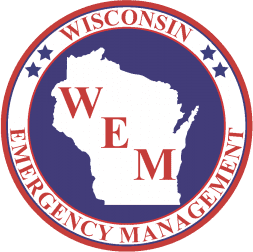There are potential funding opportunities available after a disaster, however everything starts with a swift and accurate damage assessment.
Damage assessment determines what was damaged, as well as when, where, and how damage occurred. These assessments start the eligibility determination for disaster recovery programs, such as the Wisconsin Disaster Fund, FEMA’s Public Assistance and Individual Assistant Programs, and other potential programs.
If you want more information on damage assessment, please choose one of the following.
I am a:
PRIVATE CITIZEN / BUSINESS OWNER
Things you can do before a disaster:
maintain property insurance
CONSIDER FLOOD INSURANCE
HAVE A BACK-UP POWER SOURCE
develop and practice an emergency plan
Things you need to do immediately following a disaster:
RECORD DAMAGES
Contact your insurance company
SAVE REPAIR AND CLEAN UP RECEIPTS
Monitor local media and press releases on directions to report damages homes/businesses
You might not be contacted by anyone after reporting damages if:
While you may be able to easily recover from your damages, your neighbors may not.
By reporting damages, you may assist your community to reach thresholds necessary for disaster assistance.
COUNTY / TRIBE / MUNICIPALITY
Before the disaster:
Ensure access to:
Survey123 training for Damage Assessment
Further information can be found in the following locations in WI WebEOC:
o WI WebEOC > Advanced File Library > Recovery > Damage Assessment > Survey 123 Directions
o WI WebEOC > Daily Operations > Training Videos > Damage Assessment using Survey123 AND WEM Recovery Refresher: Survey123 (rev. 2022)
Read Guidelines for Assessing and Documenting Disaster Damage
WebEOC > Advanced File Library > Recovery > Damage Assessment > Damage Assessment Guide
Be familiar with the different types of funding and their thresholds
Be familiar with:
Understand 211 and how to active them for your incident
WebEOC > Advanced File Library > Recovery > Damage Assessment > IA Packet Documents > County and Tribe Packet > 12. 2-1-1 County Activation Guide
After the disaster:
Municipalities
Report your damages to the County Emergency Management Office. Find your local office at https://wem.wi.gov/county-directors/
Counties/Tribes/Municipalities
Declare an Emergency, if applicable
Record and document damages
Using Survey 123 Damage Assessment, pencil/paper, or other system available to you
Counties/Tribes
Complete and submit initial UDSR within 72 hours
LINKS:
TRAINING:
If you are interested in additional training, you can view the “WEM Damage Assessment Progressive Training Program” in WebEOC > Advance File Library > Recovery > Damage Assessment.
You can visit the WEM Training Portal or the National Preparedness First Responder course catalog for additional training opportunities
Damage Assessment Contact Information
For Assistance in WebEOC on the UDSR Board contact:
For Assistance in UDSR information to be included:
widisasterfund@widma.gov
OR
DMAWEMPublicAssistance@widma.gov

